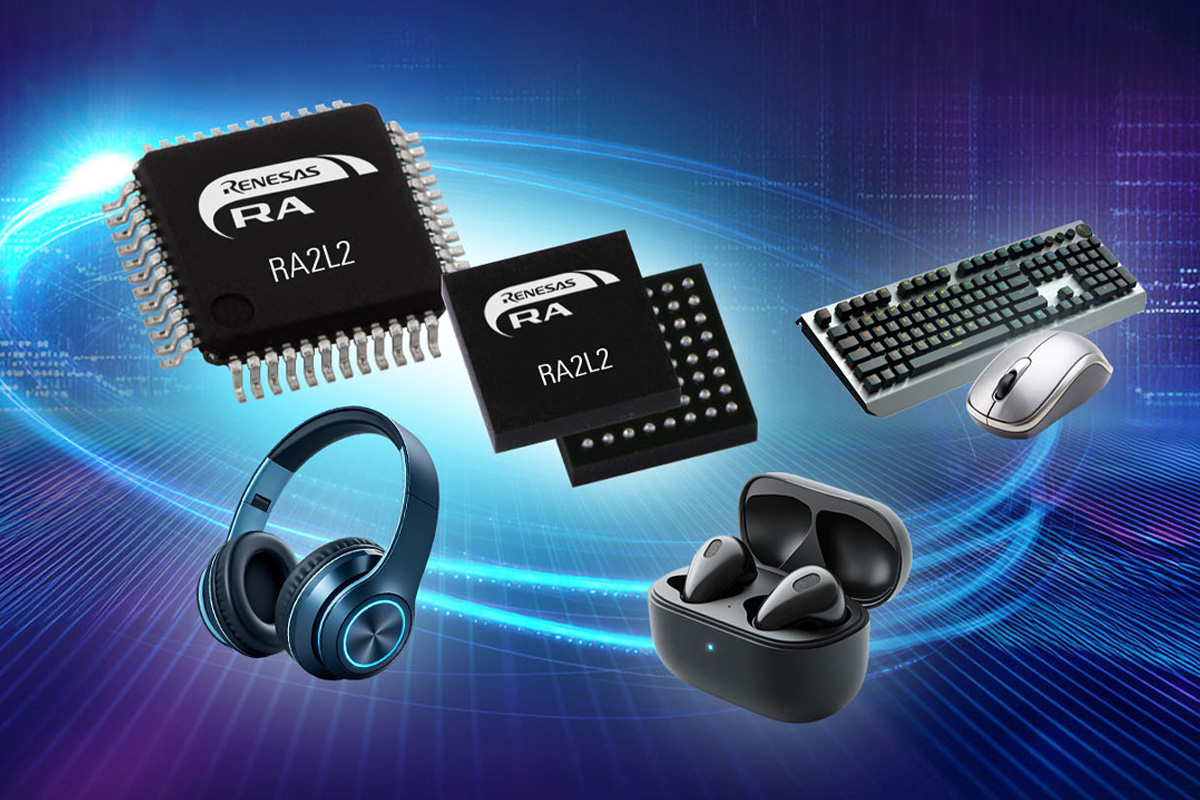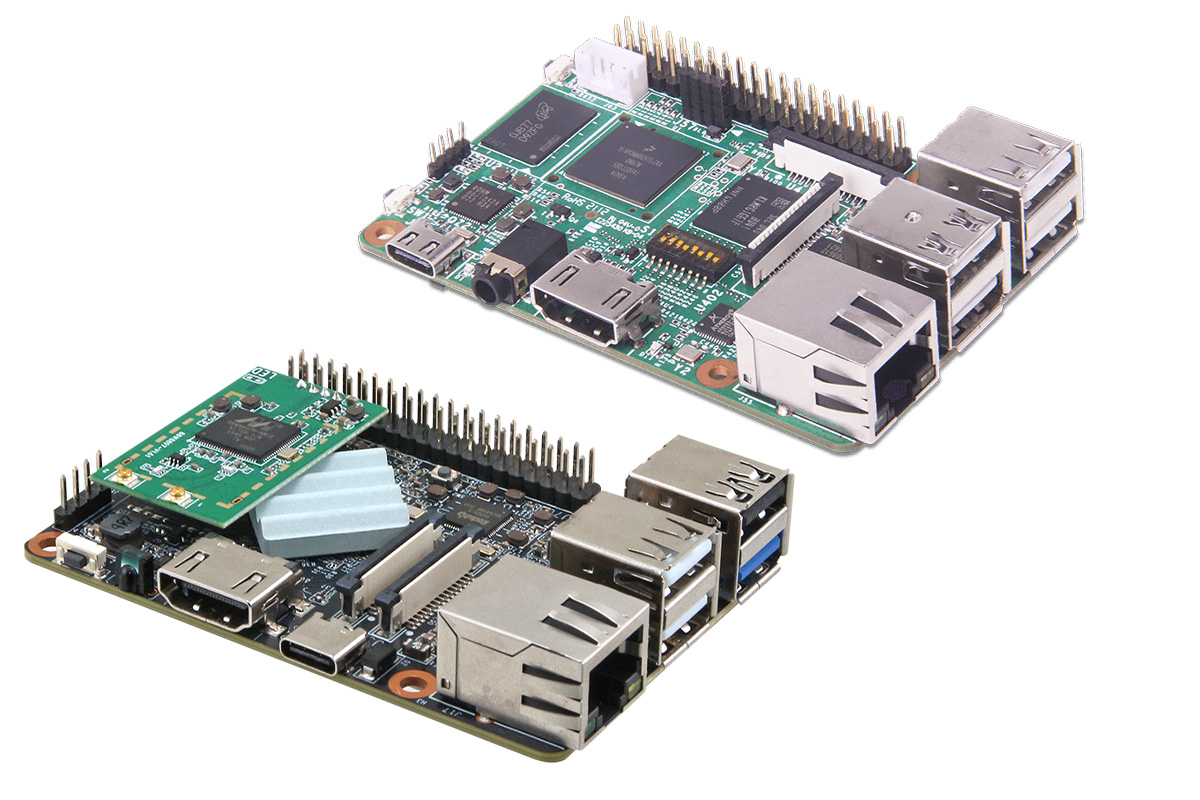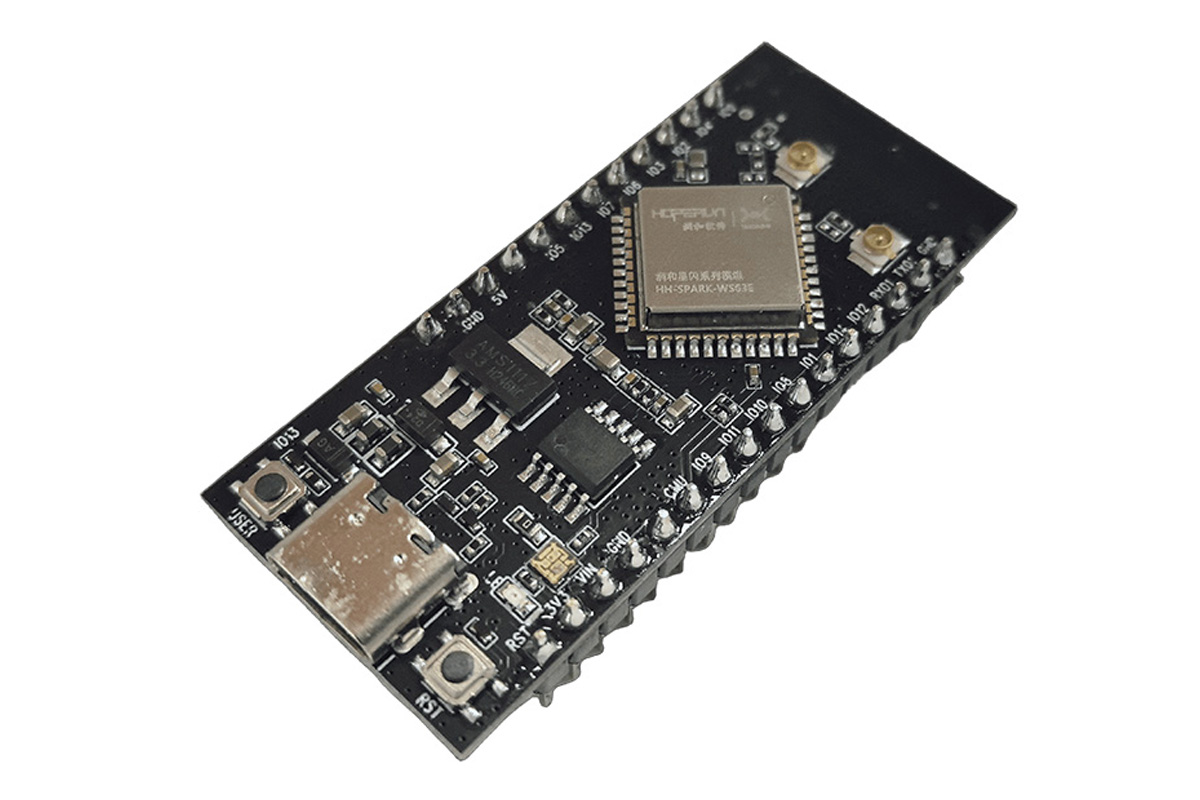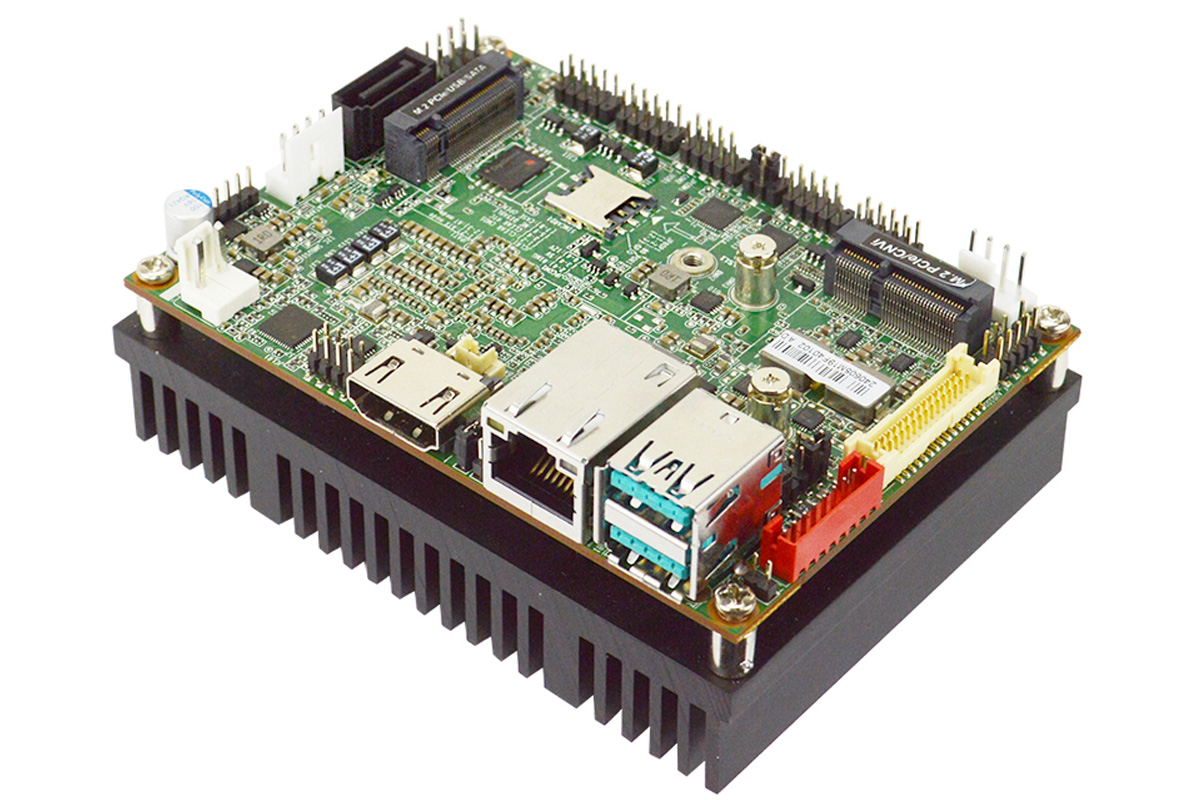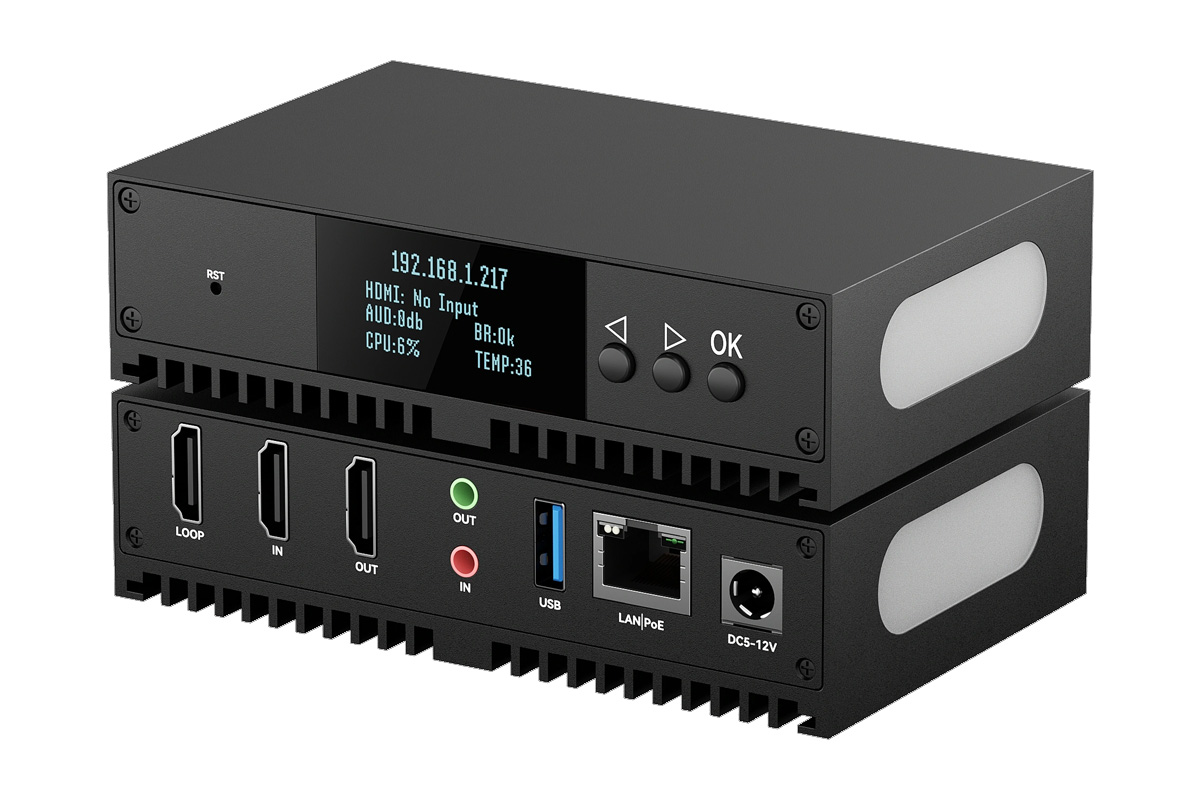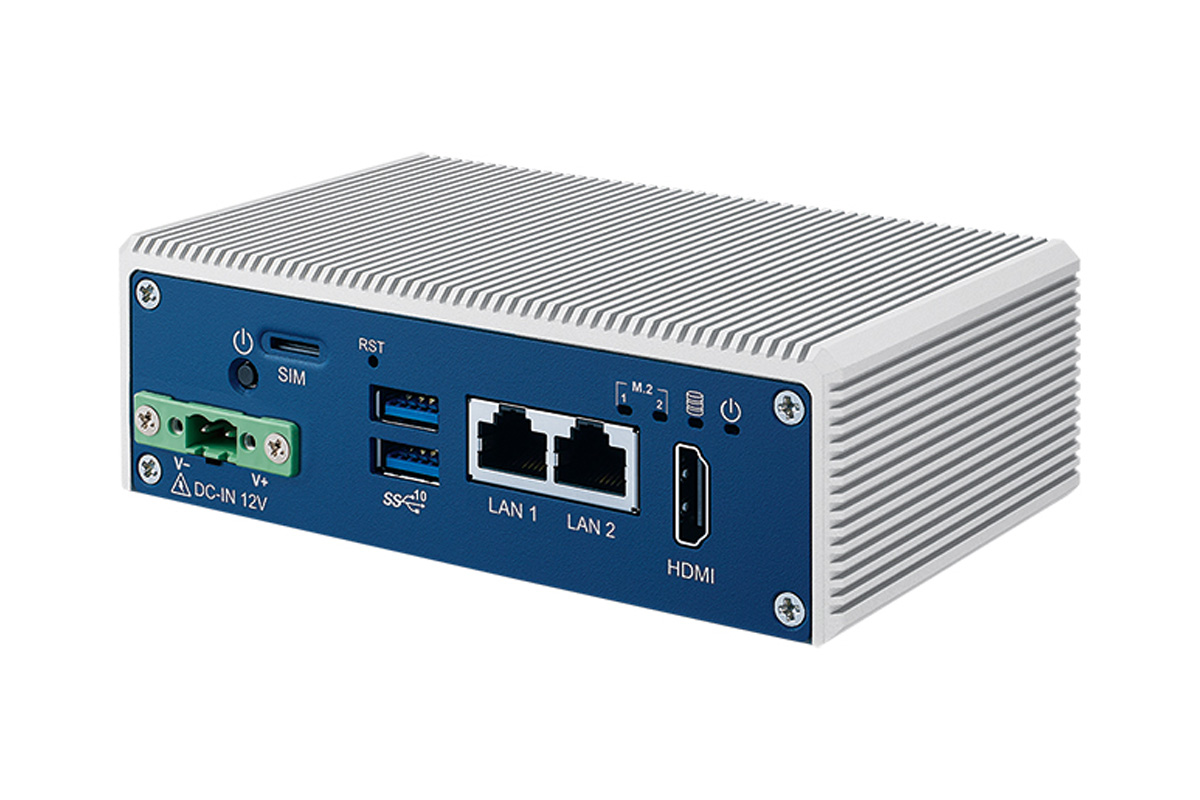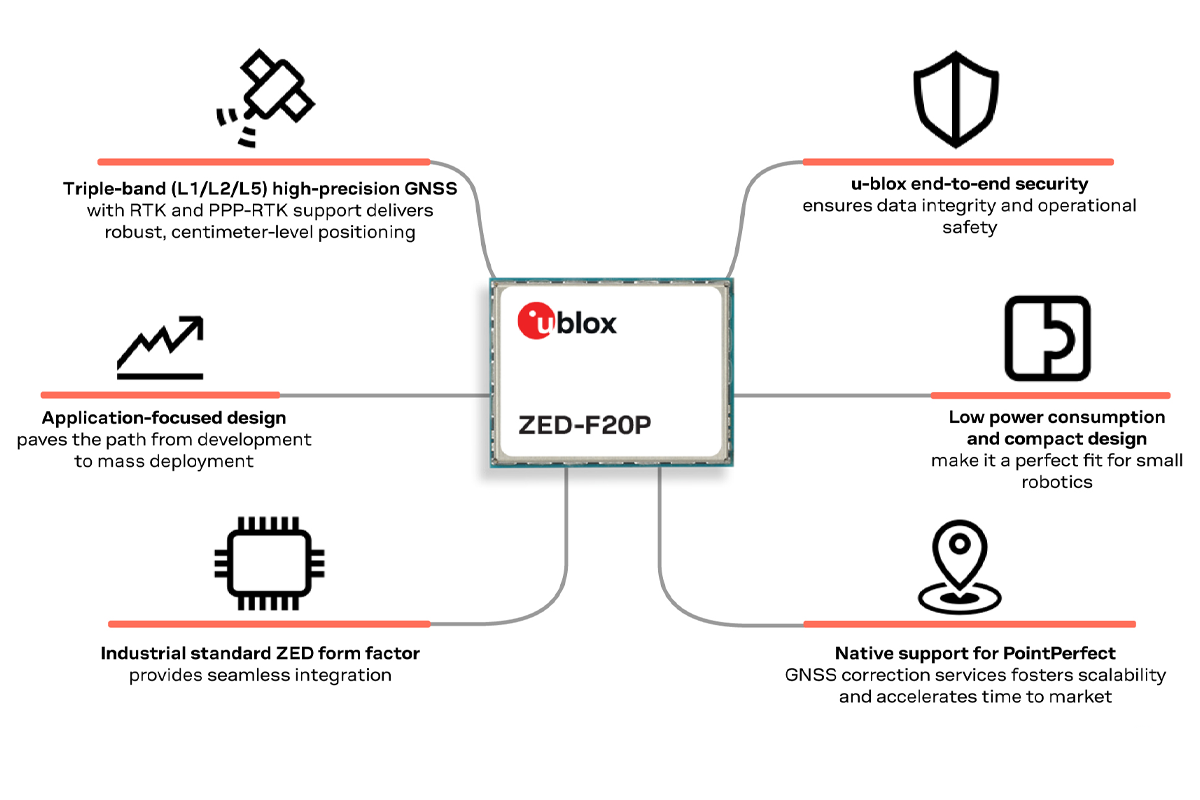Renesas RA2L2 is the world’s first low-power MCU to support the USB-C Revision 2.4 standard with 15W CC detection, USB FS support. It also offers support for CAN Bus, I3C, and low-power UART. The announcement follows other devices from the Renesas RA series, such as the RA2A2 Arm Cortex-M23 MCU introduced in 2024, and the RA4L1 ultra-low-power MCU unveiled earlier this year with just 168 µA/MHz operation, dual-bank flash, and capacitive touch. The RA2L2 Cortex-M23 microcontroller also embeds up to 128KB of code flash, 16KB SRAM, and 4KB data flash for EEPROM-like storage. It supports a wide 1.6V to 5.5V supply voltage and an industrial-grade -40°C to +125°C temperature range. The MCU also integrates a ±1% high-accuracy on-chip oscillator, multiple timers including 16-bit and 32-bit PWM and low-power asynchronous timers, a 12-bit ADC, a real-time clock, and an internal temperature sensor. It’s available in 32- to 64-pin packages and offers […]
Avalue ACP-PI – A Raspberry Pi-like industrial SBC family with long-term supply, Rockchip or NXP SoC
Avalue Technology’s ACPI-PI is a Raspberry Pi-compatible, industrial SBC family, starting with the ACP-3566-PI and ACP-IMX8-PI, designed for edge computing and industrial IoT applications with long-term supply. The ACP-3566-PI is built around a Rockchip RK3566 quad-core Cortex-A55 processor with 4GB RAM and 32GB eMMC. Other features include 4K HDMI output, MIPI DSI/CSI, GbE LAN, Wi-Fi, Bluetooth, and a 40-pin GPIO header for UART, SPI, I2C, and RS-232/RS-485 expansion. The ACP-IMX8-PI, on the other hand, is built around an NXP i.MX8M Mini processor (quad Cortex-A53 + Cortex-M4), 4GB LPDDR4, 32GB eMMC, HDMI, MIPI display, and camera support. Additionally, it has four USB 2.0 ports, an SD slot, an audio jack, and GPIO/UART expansion. Measuring 85×55 mm, both boards can be used for smart retail, healthcare, factory automation, and AI edge deployments. ACP-3566-PI specifications: SoC – Rockchip RK3566 CPU – Quad-core Cortex-A55 processor @ up to 1.8/2.0 GHz GPU – with Arm […]
$7 NearLink WS63E board supports Wi-Fi 6, BLE, and SparkLink Low Energy (SLE)
The HiHope_NearLink_DK_WS63E_V03 is a low-power NearLink dev board built around the HiHope HH-SPARK-WS63E module, which features the HiSilicon NearLink WS63E SoC with 2.4GHz Wi-Fi 6, BLE 5.2, and SparkLink (SLE) 1.0 support. It’s designed for Smart Home and AIoT applications requiring low power and high security. The NearLink WS63E SoC features a 240MHz 32-bit CPU, 606KB SRAM, and a 4MB flash. The board exposes various interfaces like SPI, QSPI, I2C, UART, ADC, PWM, and GPIOs through GPIO headers. Security features include hardware AES, RSA, ECC, and FIPS140-2-compliant RNG. Target applications include Smart Home appliances, wearables, medical monitoring, industrial testing, energy management, and Smart Agriculture. HiHope NearLink_DK_WS63E specifications: SoC – HiSilicon NearLink WS63E 32-bit microprocessor up to 240 MHz 606 KB SRAM, 300 KB ROM 4MB embedded Flash Wireless (2.4GHz) Wi-Fi IEEE 802.11b/g/n/ax (ch1–ch14), 20/40MHz (n), 20MHz (ax) Data rates: up to 150 Mbps (HT40), 114.7 Mbps (HE20) MAC: 802.11d/e/i/k/v/w; Features: A-MPDU, […]
Jetway PIC-ASL1 – A low-power Intel Atom x7213RE/x7433RE fanless industrial Pico-ITX SBC
Jetway PIC-ASL1 is a low-power, fanless Pico-ITX SBC built around the Intel Atom x7213RE or x7433RE Amston Lake SoC for industrial use. This SBC is very similar to the Alder Lake-N-based JPIC-ADN1, which Jetway released just last year. While both boards support up to 32GB DDR5 memory and dual displays via HDMI 2.0b and LVDS/eDP, the PIC-ASL1 adds industrial-grade resilience with shock/vibration resistance, a Nano SIM slot for cellular connectivity, and an Intel PTT for security. It also features a similar I/O layout, including dual USB 3.2 Gen 2, four USB 2.0, serial headers, two M.2 expansion slots, and a SATA III port for storage. Additionally, the PIC-ASL1 complies with various industrial standards, making it more suitable for use in harsh industrial environments compared to the ADN1. Jetway PIC-ASL1 specifications: Amston Lake SoC (one or the other) Intel Atom x7213RE dual-core processor @ 2.0 to 3.4 GHz with 6MB cache, […]
LinkPi ENC1Pro 4Kp60 HDMI video encoder supports NDI HX, Tally light, and 4G/5G/Wi-Fi USB Expansion
The LinkPi ENC1Pro is a compact, high-performance 4Kp60 HDMI video encoder designed for professional live streaming and broadcasting applications. It supports two HDMI 2.0 inputs and outputs with resolutions up to 4K @ 60fps, and is equipped with a built-in Tally light for studio use. Powered by an unnamed quad-core Arm Cortex-A55 processor coupled with 4GB DDR4 RAM and 8GB eMMC flash, the device supports H.265 (HEVC), H.264, and MJPEG compression formats. It is compatible with various streaming protocols, including NDI HX (license required), RTSP, RTMP, SRT, HTTP, HLS, and ONVIF. Other features include real-time picture-in-picture, multi-view, watermarking, subtitles, audio mixing, and video recording in formats such as MP4, MOV, and MKV. The ENC1Pro also supports AAC, MP3, OPUS, and other audio codecs, and includes 3.5mm stereo audio I/O alongside HDMI audio. It also offers flexible network connectivity with Gigabit Ethernet, USB expansion for 4G/5G/Wi-Fi modules, and supports remote management […]
Vecow PBC-2000 – An Intel Atom x7211RE fanless embedded system for industrial use
Vecow PBC-2000 is a fanless embedded system that houses the company’s EPBC-2000 2.5-inch Pico-ITX SBC powered by an Intel Atom x7211RE SoC. The PBC-2000 supports a wide -40°C to 70°C temperature range, dual 2.5GbE LAN, serial and USB interfaces, and comes with wall and optional DIN rail mounting options. Other features include support for up to 16GB DDR5 4800MHz SO-DIMM memory, as well as a SATA III port and an M.2 socket for storage. The system also features an external SIM card socket for 5G/4G/LTE connectivity, and an M.2 E-Key slot for wireless modules. Additional features include a 12V DC power input via a 2-pin terminal block, hardware monitoring with auto-throttling, a watchdog timer, and support for Wake-on-LAN and PXE boot. Vecow PBC-2000 and EPBC-2000 specifications: SoC – Intel Atom x7211RE dual-core Amstom Lake processor @ 2.0 to 3.4 GHz with 6MB cache, 16EU Intel UHD graphics; TDP: 9W System Memory […]
u-blox ZED-F20P triple-band GNSS module provides 25Hz RTK/PPP-RTK with centimeter accuracy for drones and robots
The u-blox ZED-F20P is a high-precision, triple-band GNSS module designed for fast-scaling applications, such as drones, ground robots, and other dynamic platforms. It supports L1/L2/L5 bands and delivers centimeter-level accuracy using RTK and PPP-RTK correction methods. Designed for low power consumption and fast convergence, the ZED-F20P operates at 25 Hz and integrates various security features, making it suitable for lightweight and mobile platforms. It is fully compatible with the existing ZED module footprint and UBX protocol, allowing easy integration and upgrade paths within the ZED portfolio. The module works with the ANN-MB2 all-band antenna and supports u-blox’s PointPerfect Flex and Live correction services, offering rapid, base station–free accuracy in challenging environments. These features make this suitable for applications like robotic lawnmowers and autonomous aerial systems. u-blox ZED-F20P specifications: Storage – Internal Flash for firmware GNSS receiver u-blox F20 engine (672-channel) GPS – L1C/A, L2C, L5 QZSS – L1C/A, L1C/B*, L2C, […]
ESP32-P4 development board features 3.4-inch or 4-inch round IPS touchscreen display
Waveshare ESP32-P4-WIFI6-Touch-LCD-3.4C and ESP32-P4-WIFI6-Touch-LCD-4C ESP32-P4-based development boards feature a 3.4-inch and a 4-inch round IPS display, respectively, a 10-point capacitive touchscreen, and a wide 170° viewing angle. They also integrate two microphones with echo cancellation for voice AI applications and offer Wi-Fi 6 and Bluetooth 5 (LE) connectivity via an ESP32-C6 module. Designed for AIoT and HMI projects, the boards also include USB ports, a camera connector, a speaker connector, and a microSD card slot. Target applications include Smart Home control panels, voice-controlled interfaces, digital dashboards, indoor environmental monitoring, PC performance monitoring, and other secure IoT and edge computing applications. Waveshare ESP32-P4-WIFI6-Touch-LCD-3.4C/4C specifications Main module – ESP32-P4-Core Module Microcontroller – ESP32-P4NRW32 MCU Dual-core RISC-V microcontroller @ 400 MHz with AI instructions extension and single-precision FPU Single-RISC-V LP (Low-power) MCU core @ up to 40 MHz GPU – 2D Pixel Processing Accelerator (PPA) VPU – H.264 and JPEG codecs support Memory – […]


